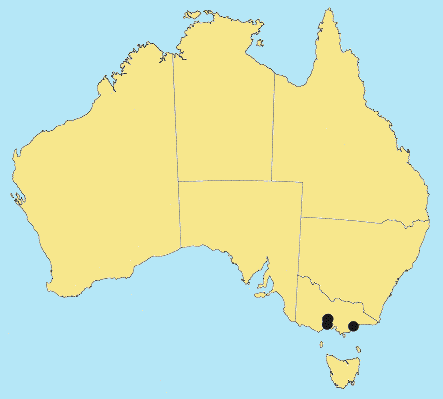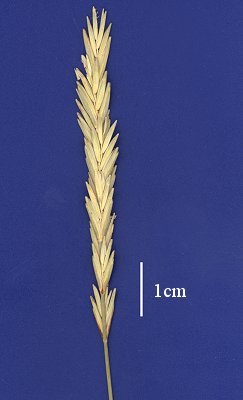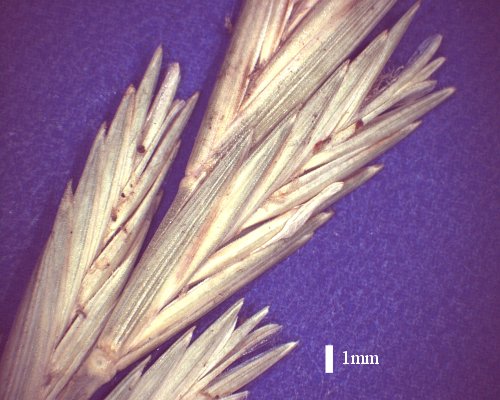Elytrigia pungens* (Pers.) Tutin. Watsonia
2: 186 (1952).
Classification. (GPWG 2001) : Subfamily Pooideae.
Tribe Triticeae.
Basionym and/or
Replacement Name: Triticum
pungens Pers.,.
Type of Basionym or
Protologue Information: HT: (L).
Recent synonyms:
Agropyron pungens (Pers.) Roem. & Schult., Elymus pungens (Pers.)
Melderis.
Key references
(books and floras): [2002] D.Sharp & B.K.Simon, AusGrass, Grasses of
Australia, [2009] A.Wilson (ed.). Flora of Australia, Vol 44A. Poaceae
2 (101).
Habit.
Perennial. Rhizomes present, elongated. Culms 30–100 cm tall. Leaf-sheaths
hairy. Leaf-sheath auricles present. Ligule an eciliate membrane or a fringed
membrane, a ciliolate membrane, 0.5 mm long, hyaline. Leaf-blades involute,
11.5–16 cm long, 1–10 mm wide. Leaf-blade surface scabrous, glabrous.
Inflorescence.
Inflorescence solid, a raceme. Racemes 1, 7–25 cm long, bearing 19 fertile
spikelets on each.
Spikelets.
Spikelets sessile. Fertile spikelets many flowered, with at least 2 fertile
florets (5–7), comprising 5–7 fertile floret(s), with diminished florets at the
apex, elliptic to oblong, laterally compressed, 10–18 mm long.
Glumes.
Glumes similar. Lower glume lanceolate or oblong, cartilaginous or coriaceous,
keeled, 1-keeled, 5–7 -nerved. Lower glume surface glabrous or indumented.
Lower glume apex muticous or mucronate. Upper glume lanceolate or oblong,
6.5–9.6 mm long, coriaceous, keeled, 1-keeled, 5–7 -nerved. Upper glume surface
glabrous or indumented. Upper glume apex muticous or mucronate.
Florets.
Fertile lemma 8.5–11 mm long, keeled, 5 -nerved. Lemma surface glabrous or
indumented. Lemma apex muticous or mucronate. Lodicules present. Anthers 3.
Continental
Distribution: Europe, Australasia, and North America.
Australian
Distribution: Victoria.
Victoria:
Gippsland Plain, Midlands.
Notes.
This grass does not appear to be of any economic importance, either as a pest
or a beneficial species. Hybrids involving this species and E. repens
and Thinopyrum junceiforme have been reported. Such hybrids are said to
be morphologically intermediate between the putative parents, and can be
recognised by their sterile anthers. Tsvelev (1983) speculated that E.
pungens was possibly derived from a cross between Thinopyrum junceum
(L) Löve and E. repens (L.) Nevski.
A very variable species in its native
geographical range. Lemmas may be blunt or pointed, and may bear short mucros
or slender awns to 10 mm long (var. setigerum Durmort). The collections
from Australia are all assignable to subsp. pungens.
Forms dense patches on
low sand dunes, marshes and lake margins. Flowers Aug.-Mar., but probably
longer than indicated by available collections.




